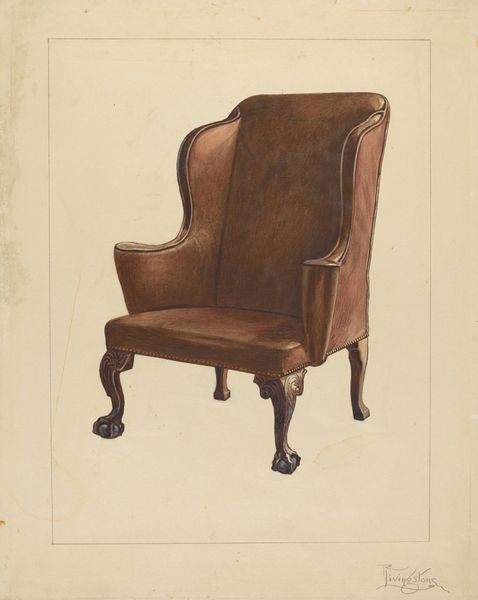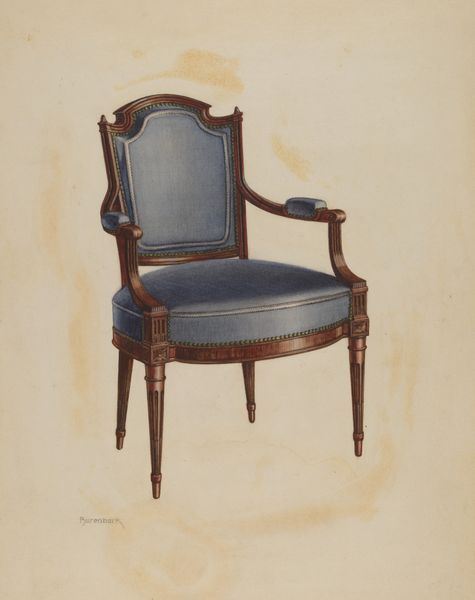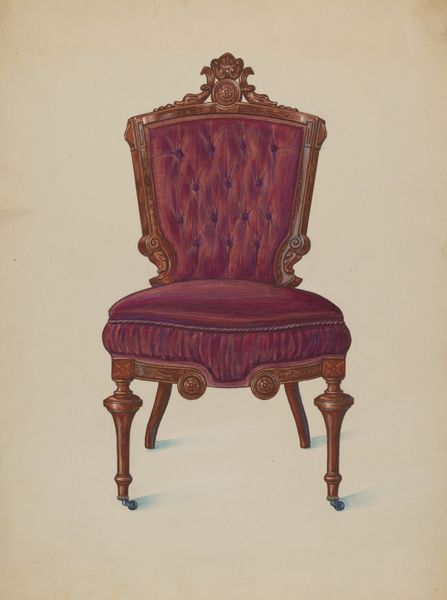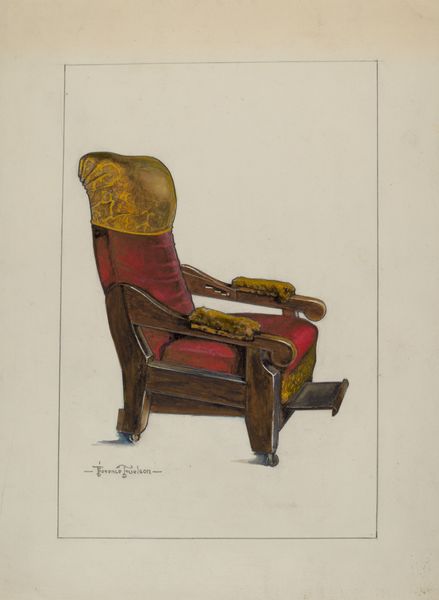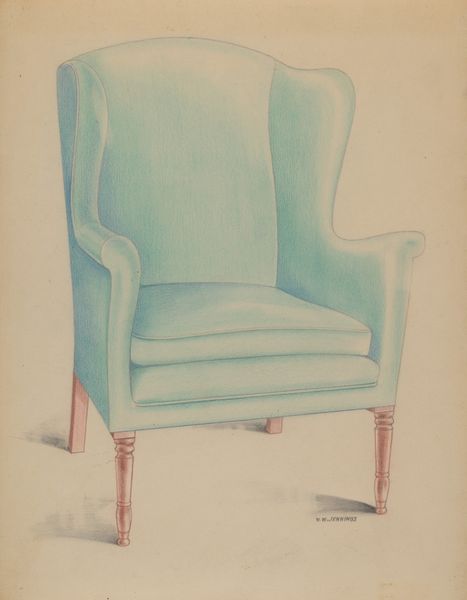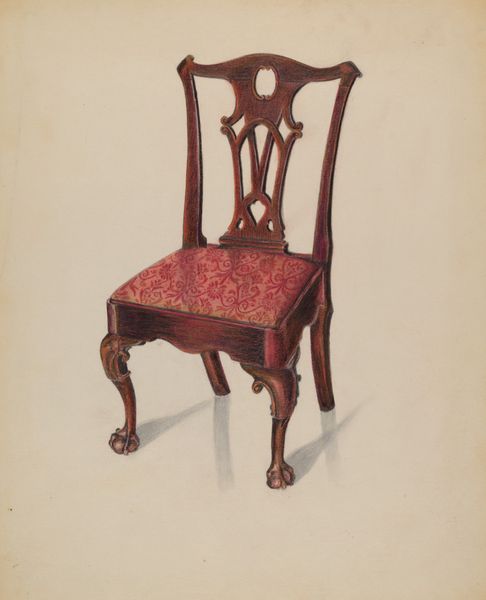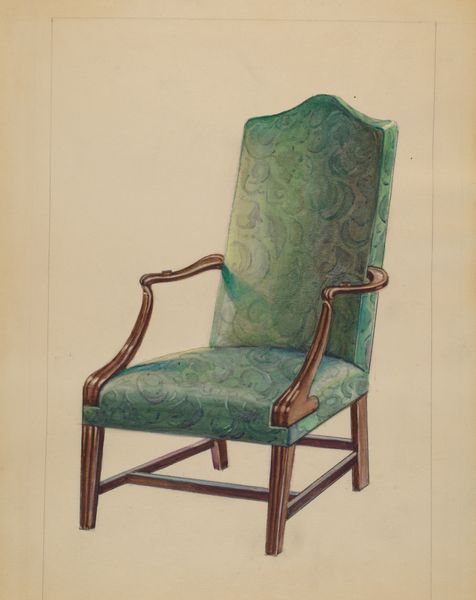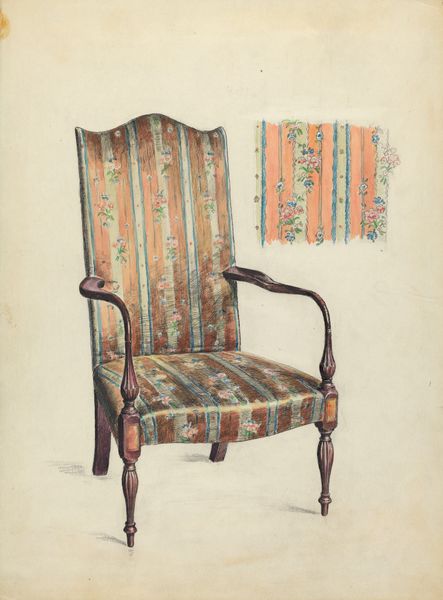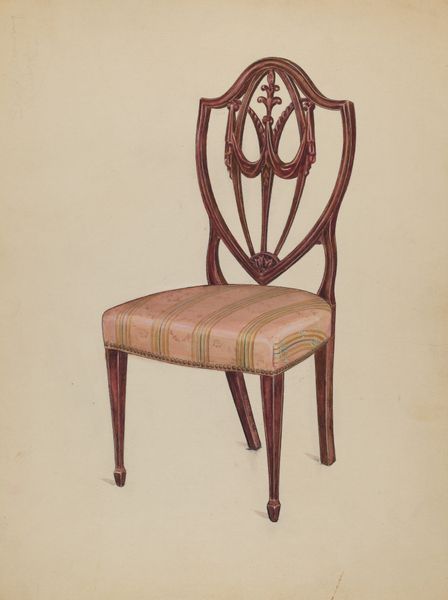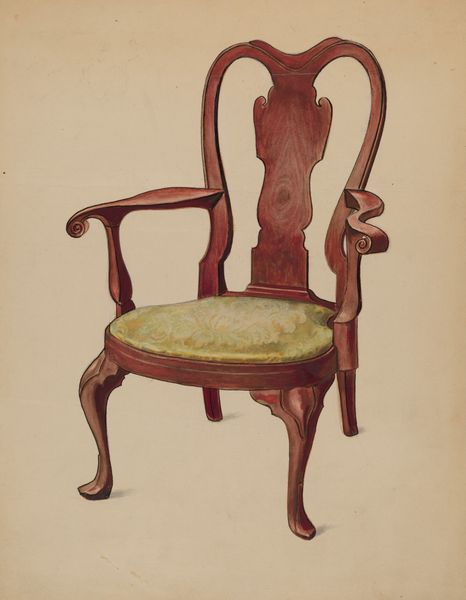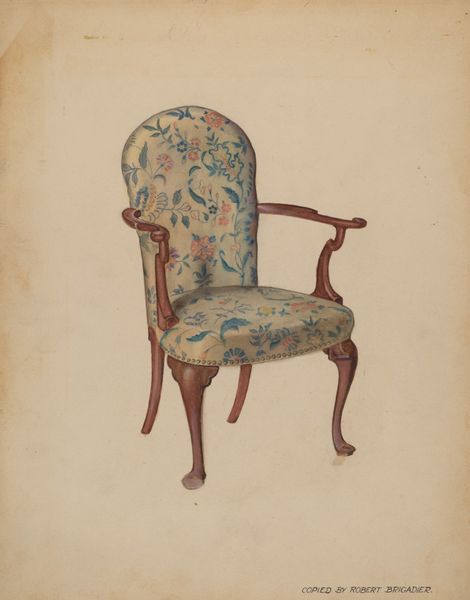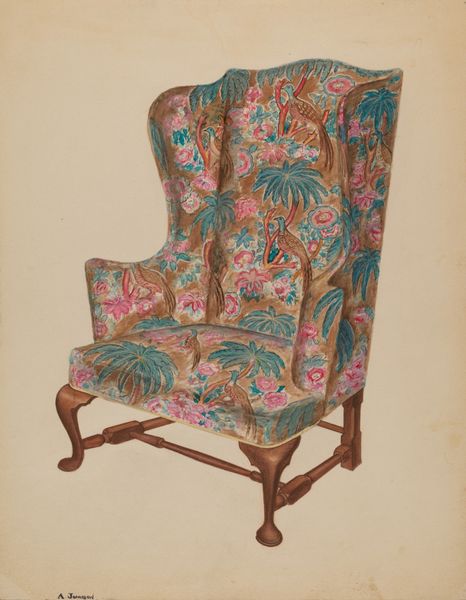
drawing, paper, watercolor
#
portrait
#
drawing
#
figuration
#
paper
#
oil painting
#
watercolor
#
watercolour illustration
#
academic-art
#
watercolor
#
realism
Dimensions: overall: 30.3 x 23 cm (11 15/16 x 9 1/16 in.) Original IAD Object: 45"high, 30"wide. Seat: 16"high
Copyright: National Gallery of Art: CC0 1.0
Curator: Here we have Michael Trekur's "Wing Chair," created around 1936. It's rendered in watercolor and drawing on paper. What's your immediate impression? Editor: Well, it feels quite…stately. A touch melancholic, perhaps? The way the chair looms, isolated. Curator: Indeed. The composition, with its strong verticality and the chair positioned slightly off-center, gives it a certain weight. Note the meticulous rendering of the chair's form; the artist seems concerned with conveying volume and texture. Semiotically, this choice enhances the chair's grand essence, imbuing it with meaning beyond mere functionality. Editor: I agree, the chair is certainly the focal point. But consider the social context – the 1930s, the Depression era. Isn't it interesting that the artist chose to depict an object associated with comfort and privilege? Does it function as aspirational imagery, or perhaps a critique of the elite's detachment from the economic struggles of the masses? Curator: A valid point. However, if we concentrate on the pictorial space and form of presentation, you can notice how the starkness of the background focuses attention on the chair. The minimal details—a pale wall and flooring— serve to emphasize its physicality, the quality of the materials. Editor: True, but I can't ignore how these minimalist background details help to convey a sense of vacancy. A solitary wing chair implies someone is absent. It leads us to questions around comfort and access to resources and speaks volumes about the class disparities in society during the work's production. Where are the bodies supposed to occupy that space? Curator: Fascinating how you interpret that visual simplicity as emptiness rather than refined structural clarity! Editor: To look deeper into the absence the solitary chair conveys, maybe we should think of how gender plays into the interpretation. The unoccupied state raises interesting questions concerning labor and women in the household. Who sat in this chair? A powerful patriarch? A convalescing matriarch? Curator: Regardless, it offers a great depth to the reading. Looking strictly at the art qualities and materials involved we notice Trekur's subtle tonal gradations within a restricted color palette adds to the piece's sophisticated and academic style. Editor: I find this a strong piece for the viewer to question issues of class and domestic roles while appreciating the traditional artistic method on display.
Comments
No comments
Be the first to comment and join the conversation on the ultimate creative platform.
